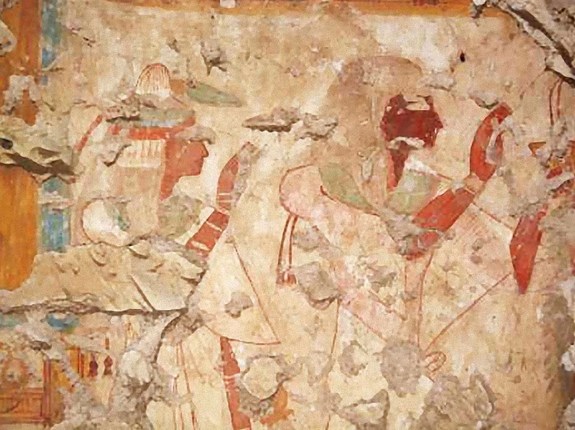
Archaeologists led by Jiro Kondo of Tokyo's Waseda University discovered the tomb while excavating another tomb in a necropolis at Luxor, which in ancient times was Thebes. The team had been working in the tomb of Userhat, who served Amenhotep III as "overseer of the king's private apartment." In the forecourt of Userhat's tomb, archaeologists discovered a hole that led to the newly discovered tomb.
The burial chamber in this previously unknown tomb has on its walls images of people, animals, and gods. The tomb was built for a scribe named Khonsu, who lived about 1200 B.C. He and his wife appear, worshiping the go Osiris and the goddess Isis, in a painting on one wall of the tomb. Another tomb wall shows a number of baboons worshiping Ra, the sun god. As well, the tomb's floor is decorated with colorful geometric patterns.
The inner chamber of the T-shaped tomb is hidden by piles of large stones; the archaeologists anticipate finding more detail about Khonsu and his role after further excavation.
Khonsu was not an uncommon name in ancient Egypt. Archaeologists already know of the tomb of another man named Khonsu, who was known by his nickname, Ta (or To). Khonsu was also an Egyptian god of the moon and time; this god's cult was centered at Thebes.